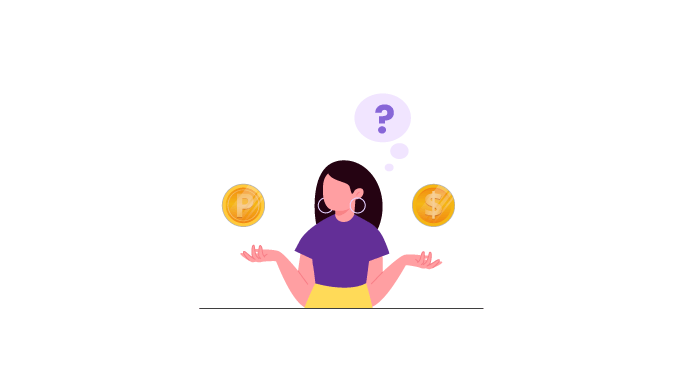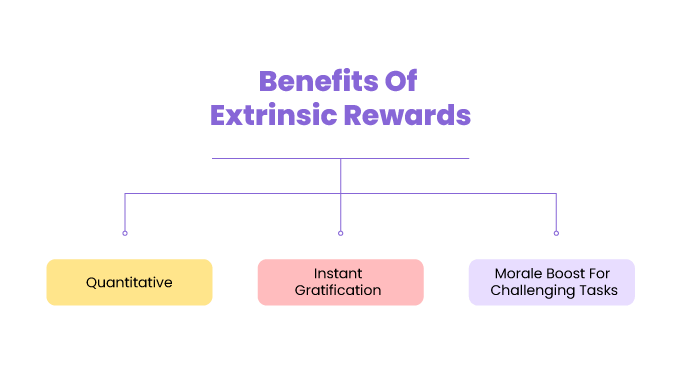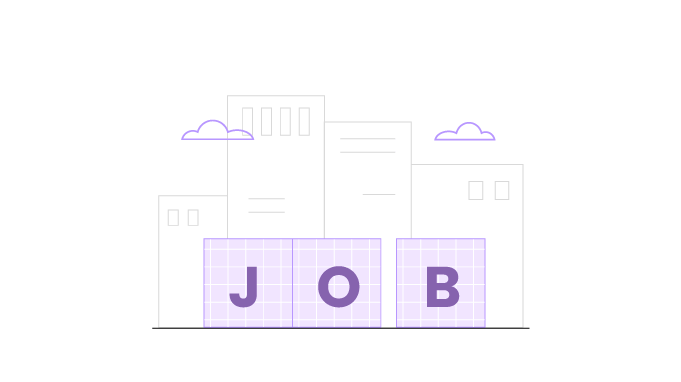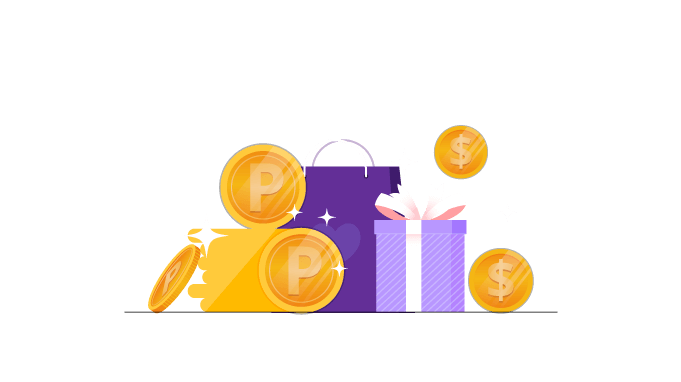10 Unique Extrinsic Rewards That Your Employees Will Love In 2024
Imagine. What would happen if your employees knew that behind every great job they do, there is a tangible reward waiting for them at the end of it? Deadlines would be met sooner, people would be more motivated, and productivity would skyrocket. And that precisely explains the power that extrinsic rewards hold.
Definition Of Extrinsic Rewards
Extrinsic rewards are a type of incentive that motivates people by rewarding them with something tangible — such as praise, fame, or money — for achieving a specific goal.
The term "extrinsic" denotes that the reward will come through external factors and is not self-sustained.
In other words, if the extrinsic reward is not offered by someone else—most likely the manager or the organization—the person might not want to complete a task.
In other words, extrinsic rewards are needed when a person needs to complete a task but lacks the necessary push—usually from the manager or the organization.
How To Make Extrinsic Rewards Feel More Rewarding?

Our relationship with work is changing. People now want the limelight to be on their work and achievements. They want their peers and managers to see, value, and recognize their contributions.
But the question is, are extrinsic rewards as good as they sound? Will showering our employees with expensive gifts and vacations really amp up their performance?
Well, not quite.
Firstly, external motivators are susceptible to the so-called Hedonic treadmill. It simply means that once we get used to the good stuff, we will likely return for more.
Leaders, if you think this sounds like good news, wait till you know the negative outcomes of it.
- Research tells us that the "high" you get with external rewards- promotion, money, or a new car- has a very short-term effect. Soon after, you need a new push to get to that top-of-the-world feeling. It's never-ending, exactly like running on a treadmill.
- Meanwhile, new research attests that when we are extrinsically driven, the quality of our performance, persistence, and creativity are not just as good as with intrinsic motivators.
The Solution?
But does this mean that all extrinsic rewards are bad? Not at all.
A Harvard Business Review research showed us a way out of this dilemma. According to the research:
Small— even piddling— rewards could promote, rather than undermine, autonomous motivation.
Thus, the idea is to offer external rewards that are:
- Frequency: Tiny rewards in a periodic manner makes a bigger impact.
- Meaningful: Something that your employees really wanted.
- Restrict: Limit "big" rewards to a significant work milestone.
Benefits Of Extrinsic Rewards
The previous section might have made you wary about offering extrinsic rewards. But rather than a warning, consider it a disclaimer on how to offer extrinsic rewards in a way that will reap the maximum benefits.
An extrinsic reward system can be extremely powerful and motivating. It is a type of motivation that all employees expect from their organization. But, it also comes with additional pros, such as:

1. The Extrinsic Reward System Is Quantitative
Unlike intrinsic rewards, extrinsic rewards are easy to quantify, track, and measure. You know exactly what was offered and can track how it affected the employee using performance metrics.
2. It Brings Instant Gratification, Which Encourages Employees To Complete A Task
Employees experience a strong positive, emotional, and sense of accomplishment, which inspires loyalty to the company.
3. More Effective For Challenging Tasks
Not every task is created equal. Some tasks demand a high level of labor, care, and commitment.
The incentives must be extraordinary in order to spur your team's competitive nature to finish a task that requires extra effort or has a short deadline.
Here, intrinsic motivation won't suffice. You need extrinsic rewards.
10 Extrinsic Rewards Examples That Every Manager Needs
Now that we know how these types of rewards work best when offered in a timely and meaningful way, here are some popular extrinsic reward examples:
1. Great Pay

Leaders would like to believe that today, pay doesn't matter. To a certain extent, it is true.
People do want the extras like great culture, benefits, and so on. But never make the mistake of assuming that pay is something that has been replaced. Because it hasn't.
Pay still remains one of the most impactful motivators that make an employee refrain from moving to greener pastures. According to SHRM's survey, compensation or pay is one of the top 3 drivers of job satisfaction.
It doesn't imply that your top performers will leave at first sight of money. Simply put, it means that keeping your staff happy entails paying them fairly.
Thus, when you see your people going above and beyond for the job, don't shy back from compensating them fairly for their efforts.
Go above the basic pay grade if you have the means. Consider it as protecting your top talents, especially now that we are amidst the talent war and The Great Resignation.
2. Fringe Benefits
Great pay is great. But employee perks are even better.
According to Glassdoor's 2015 Employment Confidence Survey:
60% of people report that benefits & perks are a major factor in considering whether to accept a job offer. The survey also found that 80% of employees would choose additional benefits over a pay raise.
When looking for a new job, any self-respecting employee would look at the complete benefits package. Not just salary. Because majority of the companies know employees do this, and so they create a comprehensive package of benefits to attract employees.
Many of these benefits will comprise something called "fringe benefits." Long story short, fringe benefits are taxable employee benefits and must be included in the recipient's pay.
You want your employee benefits package to include at least some of these popular fringe benefits:
- Health insurance
- Life insurance
- Disability insurance
- Tuition assistance
- 401K
- Paid Time Off (PTO)
- Employee Assistance Programs (EAPs)
- Learning and development stipends
- Commuter benefits
- Childcare reimbursement
- Cafeteria subsidies
- Stock options
- Retirement planning services
A new survey conducted by Fractl found that, after health insurance, employees favor benefits that are relatively inexpensive to employers, such as flexible hours, extra paid vacation time, and work-from-home options.
3. Job Security

In an uncertain economy, job security is the most valuable asset for any aspiring job seeker. To attract the best candidates, a company should focus on offering its staff a high level of job security.
When people start working for a new company, they anticipate receiving the same level of loyalty in return that is expected of them. Such a mutually respectful relationship also inspires employees to go above and beyond for their job.
From an extrinsic motivation perspective, a study found that:
Job security is one of the most integral extrinsic factors influencing employees' job satisfaction.
Take tenure, for example. Getting tenure is one of the most sought-after rewards that employees strive to get. When your employees show their dedication and loyalty, you offer them the reward of permanent job security.
Certainly seems like a win-win situation, doesn't it?
4. Promotions
The end goal of every employee is to climb the proverbial ladder and be at the pinnacle of their career. That makes promotions one of the— if not the most— important extrinsic motivators out there.
An ominously titled HBR article called How You Promote People Can Make or Break Company Culture stated:
Among the 100 Best Companies, 75% of employees believe promotions go to those who best deserve them. That may sound high, but it ranks as the third-lowest of all 58 items we assess.
The question is, why even the best companies are susceptible to making poor decisions about promotions?
It's because promotions are still subjected to favoritism, biases, and other external factors. In fact, a report by Adobe found that:
47% of millennials started looking for a different job after receiving their performance review.
We are in a different reality now. It's a "dog-eat-dog, culture-eats-strategy-for-breakfast, war-over-talents" world out there.
Talented, skilled, and digital-savvy employees are perhaps the most precious commodity right now. To retain such key people in your organization, you need to give them extensive career development.
Companies need to adopt a performance appraisal system that is fair, measurable, and not too complex.
5. Paid Time Off

After becoming accustomed to it during the pandemic, modern workers crave the simplicity of flexibility. Work flexibility gives control over their schedules, which translates to having more control over their lives.
However, not every company can afford to go all out on offering flexible options such as remote or hybrid working. Offering paid time off— or PTO— can be a great extrinsic reward for those companies.
PTO is any time off that is compensated by an employer. This means PTO is every vacation time, sick days, bereavement, and jury duty are all PTO.
In fact, a survey on job satisfaction and engagement from SHRM found that:
A vast majority (92%) of employees reported that paid leave is important to their overall job satisfaction. But just 73% reported being satisfied with the paid leave offered at their organization.
6. Profit-sharing Plans
The one major reason why your employees aren't invested in your company's bottom line is that the goals don't really strike your employees' interest.
If you want your people to tackle the company's goals like their own, you need to drive the fact that the more profits the company makes, the more profitable it will be for them.
Hence, enter the profit-sharing plan.
According to a Gallup poll:
40% of employees want profit-sharing options as a part of their compensation plan. So this is a good enough reason why you need to consider thinking about it.
Simply put, profit-sharing is the practice of giving your staff a share of your company's profits. In addition to the employee's salary and bonuses, an employer may pay it directly or indirectly.
When you show employees the impact their work will have on the company (and their compensation), they are more likely to give it their all. It builds a sense of purpose and helps employees stay oriented toward their short and long-term goals.
The profit you share will depend on the employee's salary package and also the overall revenue generated by the company. The company can choose how much or how little it will contribute to an employee's profit-sharing plan from year to year.
7. Monetary Recognition

That being said, it would make sense that leaders know how important appreciation is for their team's morale. Right?
Well, the data shows a different picture. A recent McKinsey survey shows that:
During The Great Resignation period, 54 percent of employees felt their employers didn't value them or their work.
Imagine. An employee who felt so unappreciated at their job decided leaving (in such a bad economy) was the better course of action.
As leaders, we can certainly do better. Appreciation should not be a one-time thing. It should be timely, meaningful, and an integral part of the company culture.
At Vantage Rewards, we strive to help companies deliver an employee experience in which appreciation is the cornerstone of every typical workday. By integrating Vantage Rewards into your engagement strategy, appreciation can be:
- Timely: Never miss out on on-spot appreciation with Vantage Rewards' multi-channel integrations, mobile apps, and automated wish feature.
- Frequent & Visible: With Vantage Rewards' Social Feed, recognizing someone goes from being an awkward one-sided affair to showcasing an employee's successes by involving key members of the team.
- Value-based: Vantage Rewards helps peers, managers, and leaders articulate why they value others. Emulating reward-winning behaviors goes a long way toward propagating your company's core values.
- Inclusive: Focusing solely on top-down recognition— and limiting it to teams— is a recipe for disaster. With Vantage Rewards, everyone in the workplace has the opportunity to recognize someone else, enabling a 360-degree recognition culture that promotes inclusivity.
Do you want to know more about how Vantage Rewards can help you build the culture you envision? Connect with us for a free demo to know if Vantage Rewards will be the right fit for your organization.
8. Paid Recreational Activities
You can have the best workplace in the world, and I can find you a group of people who are stressed, erratic, and having a bad day at work. That doesn't mean you have a toxic work environment. It simply means your employees need a pick-me-up to dispel their Monday blues.
One really effective and fun way to do so is to organize team outings, lunches, and recreational activities. It's an outlet where your people can blow off some steam and simply relax for a day or two without the usual worries of meeting deadlines or sitting in long meetings.
However, organizing such events go beyond being fun. They nurture bonding, improve communication, and build rapport within the team.
If you want to have a team that works better together than alone, setting a budget for recreational activities is a small price to pay for all the positive outcomes that will come out of it.
Want to get the most out of these activities? Host them after the completion of a long and grueling project. Your employees will surely love you for it.
9. Timely And Frequent Bonuses

Employee rewards tied to specific tasks are referred to as task-based bonuses. When employees complete the bonus-related task, they become eligible to receive the reward. Such employee bonuses are a great way to encourage greater productivity and effectiveness at work.
10. Improved Work Amenities
Providing a great workplace experience means optimizing the variety and character of spaces that people can choose from during the day and empowering them to make choices that optimize their individual performance.
~ Gensler Research Institute
Poor lighting, depressing wallpaper, uncomfortable chairs, a desk in the middle of a footpath, a lack of a private space to gather your thoughts, and crowded conference rooms. These are just a few examples of how the workplace environment can shape the employee experience.
Over time, negative experiences like these add up, leaving workers with a persistent bad impression of their own workplace.
People love to feel pampered. And what better way to do it than to upgrade their workspace with better amenities? Here is a list of our favorite upgrades that we believe will make your people feel like a million bucks:
- Back-supporting chairs
- Great WiFi
- Ambient lighting
- Plenty of plants
- Removable dividers
- Lounge areas or "Quiet Pods."
Takeaways
Extrinsic rewards are not the bad guy as they are made out to be.
Yes, they are not really effective in the long run. Still, as a manager, there will be times when you need to motivate your team to complete a particularly difficult task on a tight deadline.
In times like these, you'll discover that external motivation is exactly what you need to get your team out of a rut.
FAQs: Extrinsic Rewards

1. What is the difference between intrinsic and extrinsic rewards?
Ans:
| Intrinsic Rewards | Extrinsic Rewards |
|---|---|
| Intrinsic rewards arise from inner feelings of accomplishment and success. | Extrinsic rewards often come from external sources. |
| Intrinsic rewards are ideal for both short-term and long-term goals. | Extrinsic rewards are perfect for short-term goals. |
| Employees work for a sense of purpose. | Employees work to gain something materialistic or transactional in return. |
2. Which is more effective: intrinsic motivation or extrinsic motivation?
In his book Drive: The Surprising Truth About What Motivates Us, Daniel Pink attempted to answer this question.
This book examined the "self-determination theory of motivation" proposed by Deci and Ryan. A series of studies found that people who were given a problem-solving task with no incentive completed it faster than those who were told they would be compensated for their efforts.
The findings pointed to an obvious conclusion:
Intrinsic motivation (motivation based on personal interest) is more powerful than extrinsic motivation (motivation based on external rewards such as payment or recognition).
3. When should extrinsic rewards be used?
Extrinsic rewards should be used for:
- Short-term goals
- Challenging tasks
- Big or significant milestones
The key to getting the most out of extrinsic rewards is to give them out sparingly.
4. What are the different types of extrinsic motivation?
External motivation can be divided into 4 broad categories:
- External Regulation: External regulation means you do something to satisfy an external demand or receive external incentives. For example, your boss tells you about the rewards you will receive after completing a certain goal.
- Introjected Regulation: It means being obliged to do something out of external pressure but not wanting to do it.
- Regulation Through Identification: This form of extrinsic motivation relies on making a person strive for an external goal and be self-motivated to complete the tasks that'll enable them to reach that goal. For example, an employee completing a side project to get a much-coveted promotion.
- Integrated Regulation: The person has examined the significance of the goal and decided that it is compatible with their own values and needs. Following that, the actions required to complete the goal are self-initiated. This type of extrinsic motivation does not require external factors and is the most similar to intrinsic motivation.
5. What are the cons of extrinsic motivation?
This is where the "overjustification effect" enters the picture.
When people are given extrinsic motivation (such as money or prizes) for actions that they already find intrinsically rewarding, they become less internally motivated to pursue those activities in the future, according to researchers.
















